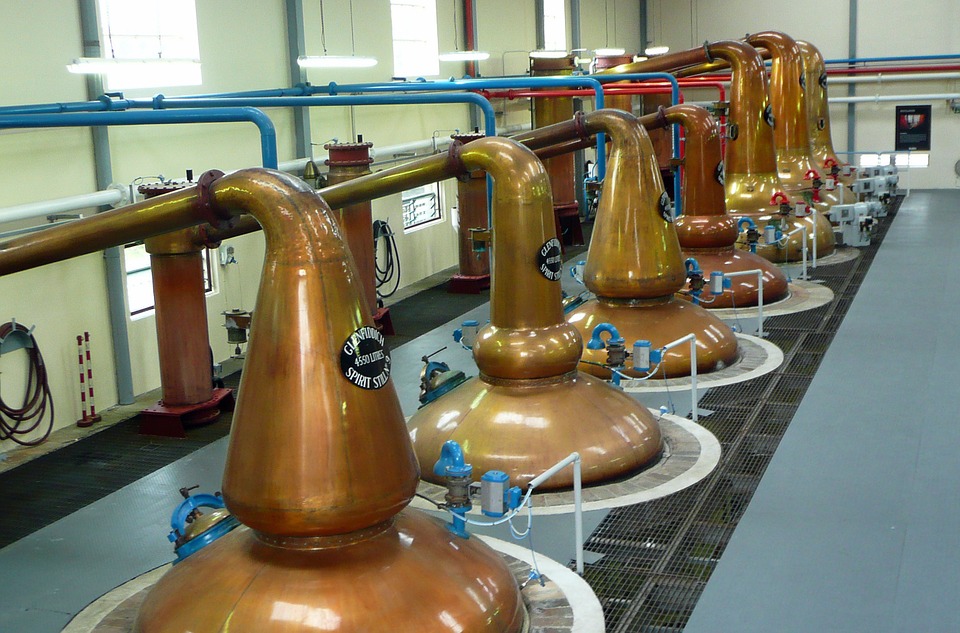Distillation is an age old process that has been around for centuries and produces multiple types of alcohols to please everyone’s palette. From whiskey to vodka to gin, the process of distillation has been tweaked so many times over the years that everyone is now a happy customer. Most distilleries have their own unique way of creating their product and Colorado distilleries are no different when it comes to this. Everyone uses either different products or techniques to tailor the product to them that gives them a unique identity. Below is a general distilling process
Step 1 : Picking a Sugar Source
Grains, fruits, and even molasses provide the sugars needed to create many of the New York spirits listed below. In other parts of the world, rice, agave, potatoes, and sweet potatoes are used. The plant source is responsible for contributing to the overall flavor of the spirit and helps define the type of spirit bottled. By law, New York’s farm distillers must source 75% of their raw materials from within the state. Different spirits have different sources,
Whiskey – Grain
Brandy – Fruit
Gin – Grain, Fruit, Potatoes and Honey
Vodka – Grain, Fruit, Potatoes, Honey and Maple
Rum – Sugarcane and Molasses
Step 2 : Extraction of Sugars
To extract sugars from starchy grains such as corn or barley, they are mixed with warm water, creating what’s called a mash. A chemical reaction happens in the mash: carbohydrates break down into simpler sugars so that the yeast can consume them. The process of pressing or crushing fruits into juices is called a must.
Step 3 : Fermentation of Mash
Next up, sugars are converted into alcohol and carbon dioxide when yeast is added to the mash or fruit juices. The carbon dioxide sheds itself from the mixture through bubbles, and the yeast multiplies until most of the sugar has been converted. When grain is used, The resulting fermented liquid is essentially a basic beer of sorts, which more often is called wort. When talking of fermented fruit based liquids, the resultat mixture is called wine.
Step 4 : Distillation of the Resultant Mixture
Craft distillers usually distill the mash or wine(whichever is applicable) in either batches by the use a pot still or with the help of a continuous still which carries on the process continuously . The concentration of ethanol is increased through the process of distillation, the resultant distillate created is higher in comparison to the mash or wine. Still come in all sorts of shapes and sizes and each type contributes to the finished product differently and adds its own version of finish to the product.
Step 5 : Aging of the Spirit
Spirits are placed in wooden casks or barrels to further transform them into the products you so enjoy. The spirits coming in touch with the wood adds to the flavor, color, and texture of the spirit. Some examples of this are brandy, rum and most commonly whiskey that are aged in wooden barrels.
Additional Information About DIstillation
Distillation is the process of heating a liquid which produces vapors and furthermore condensation, that transforms the vapors back into their original state, a liquid. Since different elements in a mixture evaporate at different temperatures, distillation makes it possible to catch elemental substances within that mixture. This can be referred to as selective evaporation of sorts.
Distilled Spirits are alcoholic beverages created by coagulating both aroma filled and alcoholic vapors out of a fermented mixture through the means of heat and then transforming the vapors back into their original liquid form. For example, water boils at 212 degrees F, and alcohol boils at a lower temperature of 173 degrees F. To separate alcohol from a fermented mixture, a distiller will heat the liquid to a 173 degrees F and the vapors that form will have a higher concentration of alcohol. The resultant condensed liquid is called the distillate and is usually filled with scentful aromas in addition to the alcohol.
The distillate can be either bottled immediately, put into wooden casks for aging, or further changed by adding macerating fruits or herbs. Most Colorado distilleries tweaks their spirit making process to create something unique and full of character and vigour, taking great pride in their creativity and work which is showcased every step of the way. For wine delivery in Malaysia, please visit lavowine.com.
